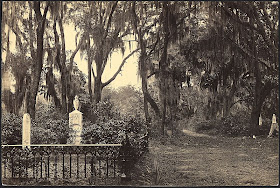Those looking for well-known pictures will not be disappointed. Among others images, visitors will find Gardner's Sharpshooter's Last Sleep from Gettysburg, a Barnard picture of Rebel works in front of Atlanta, and James Gibson's 1862 shot of the ruins of the Stone Bridge over Bull Run. However, those looking for a deeper experience will walk away with a more nuanced and complex understanding of the war. Although few in number, the images are presented in a thought-provoking manner. The curator chose and arranged the photographs with obvious care. We are asked to contemplate and reflect on the meaning behind what we see.
 |
| Ruins of Stone Bridge, Bull Run, James Gibson, 1862 (courtesy of Wikipedia). Because photography is prohibited in the exhibit room, I was unable to take pictures and have chosen to illustrate this post with copies of the same photographs found on the Internet. |
 |
| "Ram," Baty A 2d U.S. Colrd Art'y, photographer unknown, 1865 (courtesy of Corcoran Gallery). This photograph is one of four showing the battery in various stages of drill. |
A display case in the center of the room contains a collection of cartes-de-visite. Some of the small photographs shatter our typical notions of the war. Placed between images of George McClellan and Jefferson Davis are photographs of a mixed race artilleryman and an Asian-American infantryman. The visitor is left to wonder how these men were viewed by white soldiers, and how they reacted to the way white soldiers perceived them. The diversity seen in these photographs raises questions about inclusiveness in American society that have taken many decades since the war to answer.
Some of these photographs are just plain stunning works of art. George Barnard's scenes from the Atlanta Campaign represent artistry in black-and-white. His image of Buen-Ventura in Savannah, Georgia depicts vestiges of the Old South, Spanish moss and all. The photograph recalls the Southern society that Sherman's army tore asunder as it moved through Georgia. Gardner captured scenes of destruction, like the burned out ruins of the Confederate armory building in Richmond. Such photographs have documented and preserved for all generations the devastation that the Civil War visited on America.
 |
| Buen-Ventura, Savannah, Ga., George Barnard, c. 1864-65 (courtesy of Wikipedia) |
Although off-topic for this blog, a neighboring exhibit features poignant Afghan war photographs by Tim Hetherington. Visitors entering the room are transported from 19th century America to 21st century Afghanistan. The photographs present a study in contrasts with the images of the Civil War hanging on the walls next door. Yet we are also reminded that the more things change in war, the more they stay the same.
Residents of the DC area, and visitors to the nation's capital, should not miss the opportunity to view the Norrell collection at the Corcoran. These photographs, from the famous to the obscure, have a lot to tell us about the nation's deadliest conflict. We can thank the Corcoran, and Ms. Norrell, for putting on a truly remarkable visual history lesson.
Visiting the Exhibit
The Corcoran Gallery is located at 500 17th Street, N.W. Shadows of History runs through May 20, 2012. The museum charges a $10 admission fee. For more information about the exhibit, and the museum in general, check out the Corcoran Gallery's website.
In a future post, I will have something to say about the Corcoran family ties to the Civil War. Stay tuned.
No comments:
Post a Comment